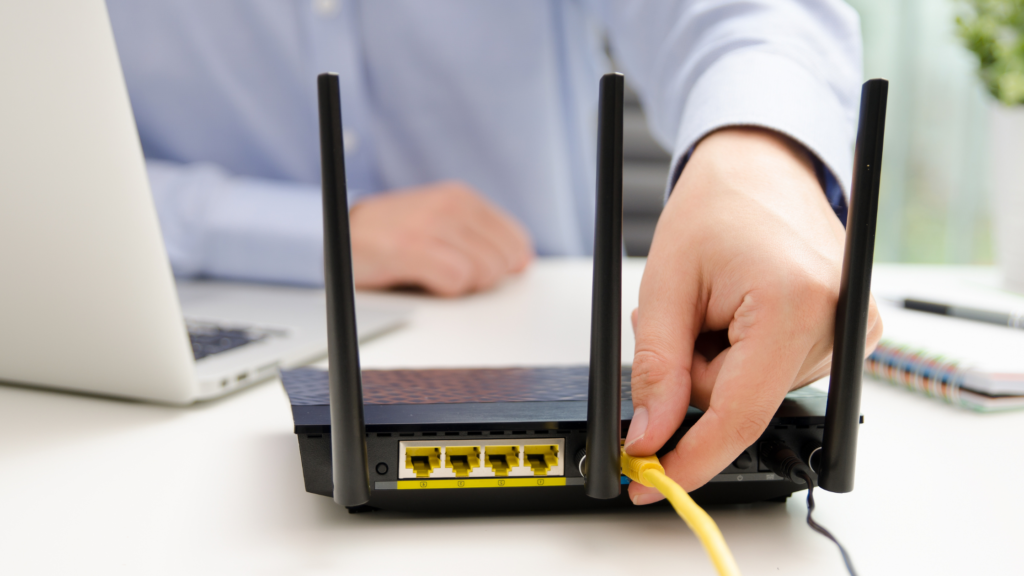Is Your Broadband Slowing You Down? Here’s What You Can Do
Slow internet can disrupt everything — from virtual meetings and online classes to streaming and everyday browsing. Many households deal with poor connectivity without fully understanding what’s causing it. Buffering videos, lag during video calls, and long loading times are often signs of a deeper issue, not just a temporary glitch.
Understanding the root causes of broadband problems is the first step toward fixing them. From outdated equipment to overloaded networks, several factors can impact speed and reliability. In some cases, the most effective solution may be switching to a provider with better infrastructure and support.
If you’re considering a change, check out our guide to the Best Internet Providers for a closer look at top-performing options.
Spot the Signs of a Slow or Unreliable Connection
Identifying the signs of a slow or unreliable connection is the first step toward improving your broadband. These issues often build up gradually and are easy to overlook until they affect your daily routine.
Streaming That Buffers Constantly
When videos pause to load or automatically downgrade to lower quality, it’s usually due to insufficient bandwidth or unstable speeds. This is especially noticeable with high-definition and 4K content on platforms like Netflix, YouTube, or live-streamed events. Buffering often worsens during peak usage hours when networks are congested.
Common signs include:
- Frequent interruptions during video playback
- Sudden drops in resolution despite strong Wi-Fi signals
- Delays when starting or skipping ahead in a video
Poor Video Call Performance

Unstable upload speeds can lead to lag, choppy audio, or frozen video during video calls. These issues are more apparent on platforms like Zoom, Teams, or Google Meet, where consistent two-way communication depends heavily on your upstream connection.
If your calls often suffer from:
- Audio cutting in and out
- Participants freezing mid-sentence
- Dropped calls altogether
It could indicate a broader issue with your broadband connection’s reliability or speed.
Long Load Times and Unresponsive Sites
Web pages that take too long to load, or fail to respond entirely, often point to a slow or congested connection. This can stem from outdated infrastructure, high latency, or temporary slowdowns caused by heavy network traffic.
If multiple sites are slow across devices, and it’s not tied to specific websites or apps, it’s worth testing your connection to determine if your current provider is delivering consistent performance.
Common Causes Behind Slower Speeds
Even with a seemingly strong broadband plan, performance can vary due to several underlying factors. Understanding these common causes can help you diagnose persistent speed issues and determine if the problem lies within your setup or with your provider.
Outdated Routers or Equipment
Technology evolves quickly, and older routers may not support the speed or Wi-Fi standards required for modern usage. Devices limited to older protocols (such as Wi-Fi 4 or early Wi-Fi 5) can bottleneck your entire connection, regardless of the plan you’re on.
Placement also matters. A router positioned in a corner or behind furniture may struggle to deliver a strong signal throughout your home. Physical barriers like thick walls or metal surfaces can weaken wireless coverage, causing noticeable slowdowns in certain areas.
Network Congestion at Peak Hours
Internet performance can decline during peak usage times — typically in the evenings or weekends — when many households are online simultaneously. This is especially common with cable-based connections, where multiple homes share bandwidth on the same local network.
In contrast, fibre-to-the-premises (FTTP) connections use dedicated lines, reducing the impact of congestion and maintaining stable speeds throughout the day.
Wi-Fi Router Capabilities by Standard
| Wi-Fi Standard | Release Year | Max Speed (Theoretical) | Ideal Use Case |
|---|---|---|---|
| Wi-Fi 4 (802.11n) | 2009 | Up to 600 Mbps | Basic browsing, email, limited streaming |
| Wi-Fi 5 (802.11ac) | 2014 | Up to 1.3 Gbps | HD streaming, moderate gaming, Zoom calls |
| Wi-Fi 6 (802.11ax) | 2019 | Up to 9.6 Gbps | Multiple devices, 4K streaming, smart homes |
| Wi-Fi 6E/7 | 2021+ | Even higher speeds | Heavy usage, future-ready smart households |
Newer Wi-Fi standards offer better speed and stability, especially for homes with many connected devices. Upgrading your router can improve performance, even without changing your broadband plan.
How to Test Your Connection Before Making a Move
Before switching providers, it’s worth running a few simple tests to confirm the source of your internet issues. These checks can help determine if the problem lies within your home network or if it’s a broader service issue tied to your current provider.
Run a Speed Test at Different Times of Day

Conducting speed tests throughout the day — in the morning, evening, and on weekends — helps you assess how consistent your connection is under different usage loads. If your results confirm ongoing issues, it might be time to compare broadband providers in your area and see who offers better consistency.
Make sure to:
- Use a reliable speed test tool
- Test from the same device and location for consistency
- Record your results for comparison
Use Ethernet to Rule Out Wi-Fi Issues
Wi-Fi performance can vary due to interference from walls, other devices, or poor router placement. To isolate the issue, connect a device directly to your router using an Ethernet cable. If speeds remain slow with a wired connection, the problem is more likely with your internet service rather than your home setup.
Check If Other Devices Experience the Same Problem
Testing multiple devices can reveal whether the issue is device-specific or network-wide. If every phone, laptop, or tablet in your home is experiencing slow speeds or disconnections, it’s a strong sign that your broadband provider may be the underlying cause.
These basic diagnostics can help you avoid unnecessary upgrades and guide you toward the right long-term solution — whether that’s changing settings, upgrading equipment, or switching providers entirely.
When It’s Time to Switch Providers
If you’ve ruled out equipment issues and still experience slow speeds or dropouts, switching providers may be the most effective solution — especially if your current plan uses outdated infrastructure or lacks reliable support.
Consider Providers with Full Fibre Connections
Full Fibre, or Fibre-to-the-Premises (FTTP), delivers internet directly to your home without relying on copper lines. This allows for faster, more stable speeds, even during peak hours when traditional networks often struggle.
Providers like BT, Virgin Media, and Brsk are expanding FTTP coverage across various regions, offering competitive alternatives to larger, legacy providers. Choosing one of these may result in better speed consistency, reduced lag, and improved long-term value.
Look for Clear Contracts and Transparent Pricing
A new provider should offer more than just faster speeds — clarity and fairness matter too. Not sure what to prioritise? Here’s what to look for in a reliable home broadband plan before committing.
- Fixed pricing throughout the term
- Clear upload and download speed disclosures
- No unexpected mid-contract price increases
These details help you understand exactly what you’re paying for — and avoid unpleasant surprises later on.
Compare Support Quality and Installation Options

Reliable customer service and fast installation can make a major difference, especially during setup or in the event of technical issues. While large providers may have more resources, smaller or newer companies often stand out for more responsive, hands-on support.
When comparing providers, consider:
- Average setup times
- Availability of local technicians
- Responsiveness during service interruptions
What to Compare When Switching Providers
| Feature | Current Provider | New Provider (Example) |
|---|---|---|
| Download Speed | 70 Mbps | 300 Mbps |
| Upload Speed | 10 Mbps | 100 Mbps |
| Fibre Connection | No | Yes |
| Price After 12 Months | £49/month | £39/month (fixed) |
| Customer Support Rating | 3/5 reviews | 4.7/5 reviews |
Before diving into comparisons, it helps to know the key features to consider before switching to avoid overpaying or underperforming packages.
Final Thoughts
Unreliable broadband can do more than cause frustration — it can interfere with productivity, disrupt streaming, and impact everyday tasks. If slow speeds persist despite equipment upgrades or troubleshooting, it may be time to explore better options.
Switching to a provider with stronger infrastructure and clearer service terms can lead to a noticeably better experience.

